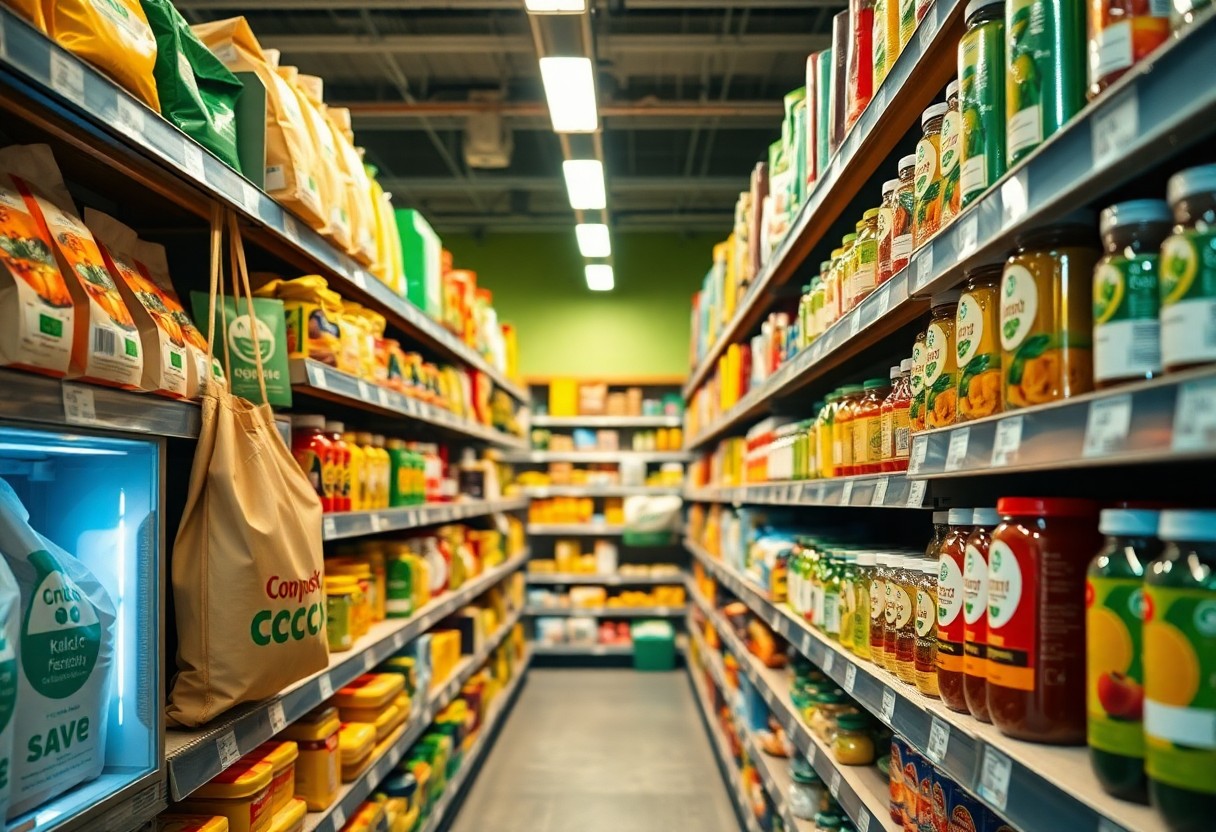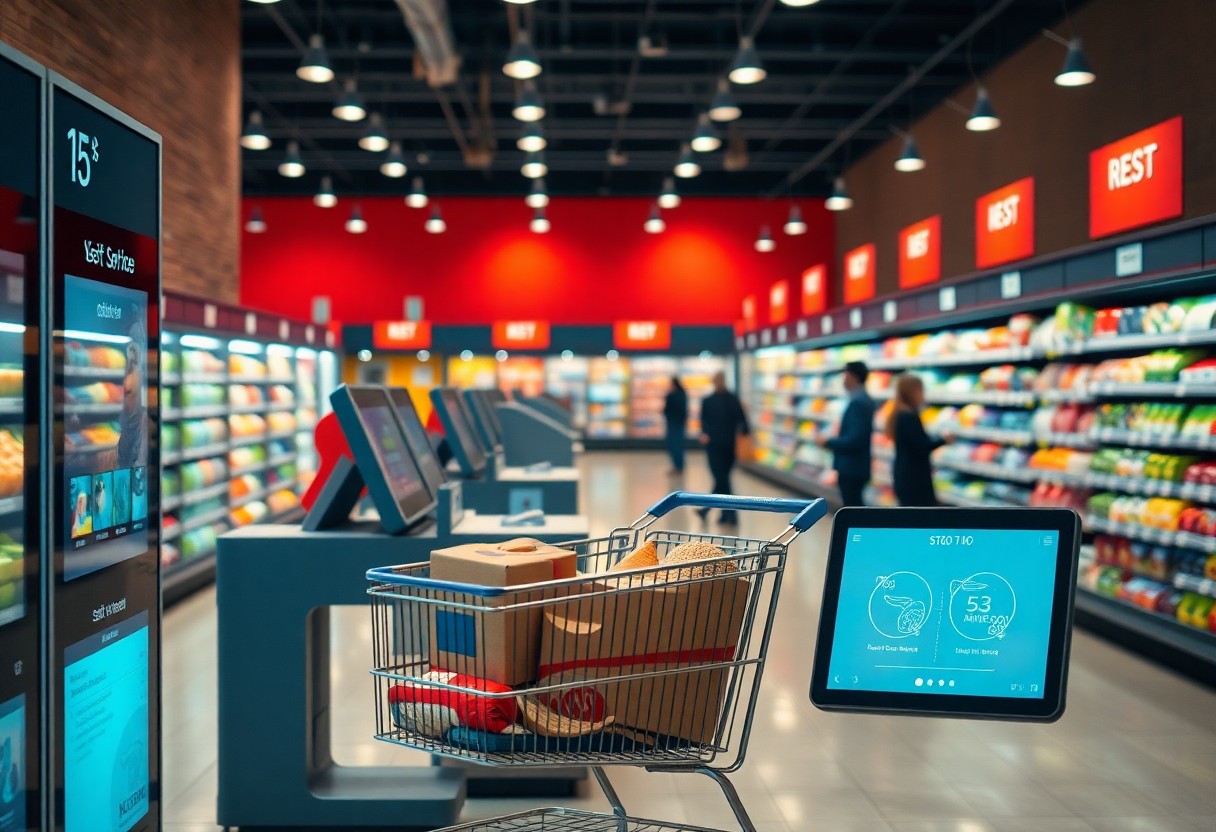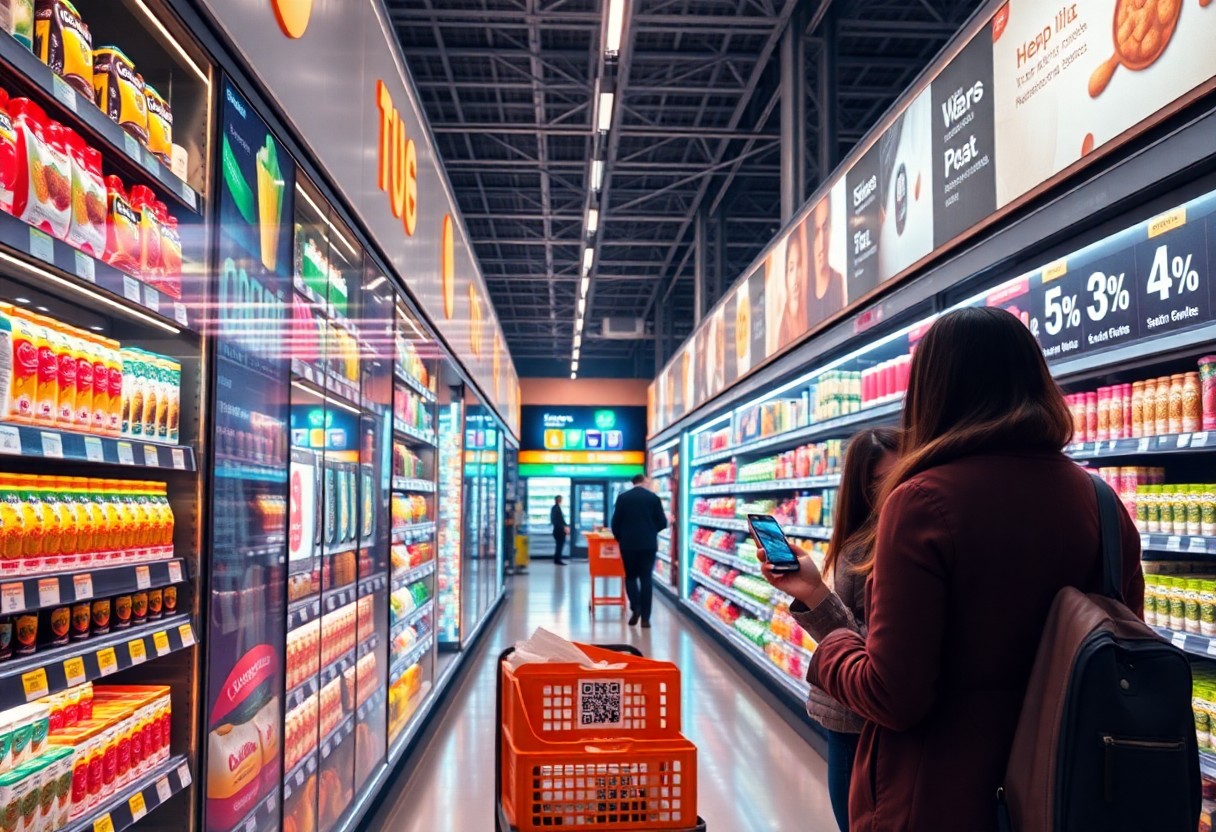Trends in the grocery sector are evolving rapidly, impacting how you shop for food. In 2025, you can expect AI-driven shopping lists to streamline your shopping experience, alongside a significant rise in zero-waste packaging options that support sustainability. Additionally, personalized nutrition will become more accessible, allowing you to tailor your diet to your health needs. To dive deeper into these trends, check out the Product: U.S. Grocery Shopper Trends 2025.

Sustainable Packaging
Sustainable packaging is rapidly transforming grocery shopping, with consumers increasingly prioritizing environmentally friendly options. Brands are responding to this demand by adopting practices that minimize waste and reduce harmful impacts on the environment. This shift not only enhances your shopping experience but also allows you to contribute to a more sustainable future.
Biodegradable Materials
Biodegradable materials are gaining traction as a preferred alternative to traditional plastics in grocery packaging. These innovative materials break down naturally and safely, reducing plastic waste in landfills and oceans. Many companies are now using plant-based polymers derived from cornstarch or sugarcane, which can decompose in a matter of months. This shift empowers you to make eco-friendly choices with every grocery purchase.
Reusable Containers
Reusable containers are revolutionizing how you think about food packaging. By opting for containers that can be utilized multiple times, you significantly decrease your reliance on single-use plastics. Many grocery stores now offer discounts for customers who bring their own containers for bulk items, encouraging sustainable practices while saving you money.
The trend towards reusable containers is not just about individual choices; it reflects a broader cultural shift towards sustainability. A study found that using reusable containers can reduce plastic waste by up to 90%, making a noticeable difference in your community. Many grocery chains are adopting programs that promote reusable packaging, allowing you to enjoy convenience without sacrificing your commitment to the environment. Investing in high-quality, multi-use containers enables you to store food safely while contributing to a decrease in overall waste.
Plant-Based Products
With the rise of health-conscious consumers and environmental awareness, plant-based products are set to dominate the grocery landscape in 2025. You’ll find an explosion of innovative options that cater to various dietary preferences, focusing on both flavor and nutritional benefits. Staggering growth rates in this sector showcase a shift toward sustainable diets, with studies indicating that over 60% of consumers actively seek plant-based alternatives in their grocery carts.
Meat Alternatives
Meat alternatives continue to gain traction among consumers looking to reduce their meat intake without sacrificing taste. You’ll discover options ranging from lab-grown meats to innovative formulations made from beans, lentils, and even mushrooms. Brands like Beyond Meat and Impossible Foods are trailblazing the category, with demand projected to reach $140 billion by 2029, pushing retailers to increase shelf space for these revolutionary products.
Dairy Substitutes
The dairy substitutes market is expanding rapidly, offering you diverse options like almond milk, oat yogurt, and cashew cheese. With the dairy alternatives industry projected to be worth over $50 billion by 2025, many grocery stores are allocating entire sections to cater to this growing demand. They provide you with alternatives that mimic the taste and texture of traditional dairy, often fortified with nutrients to ensure balanced diets.
Innovations in dairy substitutes are transforming the way you think about milk and cheese. Brands are incorporating ingredients like pea protein and coconut cream to enhance flavor and nutritional profiles. For example, oat milk has surged in popularity, thanks to its creaminess that makes it an excellent choice for coffee or cereal. Combine that with an increase in sustainable sourcing and eco-friendly packaging, and you have a sector primed for explosive growth, appealing to both health-conscious consumers and environmentally-aware shoppers.

Smart Technology Integration
Smart technology integration is revolutionizing grocery shopping, enhancing convenience and personalization. As you navigate your local supermarket, innovations like AI-driven shopping assistants help streamline your experience, making it easier to find products, compare prices, and even suggest recipes based on your preferences. With these advancements, your shopping habits are becoming more efficient, while also aligning with sustainability goals.
AI in Shopping
AI is transforming your grocery experience by enabling personalized shopping through smart recommendations and dynamic pricing. Algorithms analyze your purchase history, suggesting items you might need based on trends, dietary preferences, and previous buys. This means your shopping lists can adapt in real-time, ensuring you always have the necessarys on hand while introducing you to new products that fit your lifestyle.
Automated Checkout Systems
Automated checkout systems are changing the way you complete your shopping. With self-checkout kiosks and mobile payment options, accessing your items has never been easier. These technologies reduce wait times and enhance your overall in-store experience by allowing you to quickly scan and pay for items, minimizing the hassle of traditional checkout lines.
With the rise of automated checkout systems, many retailers are investing heavily in technology that simplifies transactions. For example, Amazon Go utilizes advanced computer vision and sensor fusion to allow you to walk in, grab what you need, and walk out without any scanning. Your account is automatically charged upon exit, creating a seamless shopping experience that saves you time and effort. In 2025, expect to see more stores adopting similar systems, prioritizing speed and efficiency for your convenience while reducing operational costs for businesses.
Health and Wellness Focus
The health and wellness focus in grocery shopping is intensifying as more consumers prioritize their well-being. This trend encompasses not only nutritional content but also overall quality, with shoppers seeking products that promote a healthier lifestyle, mitigate health risks, and support long-term wellness goals. Expect to see greater demand for organic options and products with verified health benefits as you navigate grocery aisles.
Functional Foods
Functional foods are gaining traction as you look for products that do more than just satisfy hunger. These foods offer additional health benefits beyond basic nutrition, such as boosting immunity, enhancing digestion, and supporting mental health. Innovative options, like probiotics-infused yogurts and omega-3-enriched snacks, are increasingly appealing to your health-oriented preferences.
Clean Labeling
Clean labeling has established itself as a key factor in your purchasing decisions. You now prefer products that list simple, understandable ingredients, avoiding artificial additives and preservatives. Transparency about sourcing and production processes is also vital, allowing you to connect more deeply with the brands you choose.
Clean labeling defines a significant shift towards transparency in food products. Brands are increasingly opting for straightforward ingredient lists devoid of complex additives, appealing to your desire for purity and simplicity. Research shows that a staggering 75% of shoppers will actively seek clean labels, reflecting a demand for products with short, recognizable ingredients. Moreover, you are likely to regard brands that communicate their commitment to sustainability and ethical sourcing as more trustworthy, ultimately influencing your choices at checkout.
Local Sourcing
Local sourcing is becoming a significant trend, as consumers increasingly seek fresh, seasonal, and regionally produced foods. This shift not only supports local farmers but also reduces the carbon footprint associated with transporting goods. By prioritizing local products, you can enjoy better quality and flavors while contributing to the economic sustainability of your community.
Farm-to-Table Initiatives
Farm-to-table initiatives bridge the gap between food producers and consumers, emphasizing transparency and quality in the supply chain. Restaurants and grocery stores focusing on these practices often partner directly with local farms to offer seasonal menus and products. This approach provides you with fresher options and encourages a deeper connection with the source of your food.
Community Supported Agriculture
Community Supported Agriculture (CSA) programs are gaining traction, allowing you to purchase produce directly from farmers through subscription models. By joining a CSA, you receive a share of the harvest, which typically includes a variety of seasonal fruits and vegetables. This model fosters a direct relationship between you and the farm, promoting sustainable agricultural practices.
CSAs often operate on a membership basis, requiring an upfront payment that supports farmers during the growing season. In return, you gain access to fresh, organic produce that is harvested at its peak. Many CSAs also encourage engagement through farm events or newsletters, enhancing your connection to local food systems. Some reports suggest that nationwide participation in CSAs has increased by over 25% in recent years, indicating a strong consumer interest in supporting local agriculture.

E-commerce Innovations
E-commerce innovations are transforming the grocery landscape, making shopping more efficient and personalized. From AI-driven shopping lists to seamless delivery options, technology is enhancing your experience. These advancements allow for streamlined processes and better inventory management, catering to your preferences. For insights on emerging trends, check out The Next Big Things: Our Top 10 Food Trends in 2025.
Online Grocery Subscriptions
Online grocery subscriptions are gaining popularity as they offer convenience and budget management. You can sign up for services that provide regular deliveries of your favorite products, eliminating the hassle of repeated checkouts. This model not only saves time but also allows you to discover new items tailored to your taste.
Personalized Shopping Experiences
The future of grocery shopping lies in personalized experiences driven by data. Retailers are utilizing algorithms to analyze your past purchases and preferences, creating customized product recommendations just for you. Such targeted approaches enhance your shopping journey by ensuring that the items you encounter align with your dietary needs and lifestyle choices.
As algorithms analyze your shopping behavior, expect tailored deals and exclusive offers that cater directly to your tastes. Imagine discovering new snacks that perfectly match your dietary restrictions or receiving reminders about products you love. Retailers are investing heavily in personalization technology, ensuring you receive a shopping experience that feels uniquely yours. The integration of advanced analytics means you’re not just shopping; you’re engaging with a service that understands and responds to your needs.
To wrap up
Now that you’re aware of the top grocery trends for 2025, including AI-driven shopping lists and zero-waste packaging, you can strategically adapt your shopping habits to align with these innovations. By embracing these changes, you can enhance your grocery experience, reduce environmental impact, and meet your dietary needs more effectively. Staying informed will empower you to make better choices for your lifestyle and contribute to a more sustainable food system.
FAQ
Q: What are the key grocery trends expected in 2025?
A: Key trends include AI-driven shopping lists, personalized nutrition based on data, increased demand for local and organic produce, zero-waste packaging solutions, and enhanced online grocery shopping experiences.
Q: How will AI influence grocery shopping by 2025?
A: AI will create personalized shopping lists based on previous purchases, dietary preferences, and nutritional goals, making shopping more efficient and tailored to individual needs.
Q: What is the significance of zero-waste packaging in 2025 grocery trends?
A: Zero-waste packaging reduces environmental impact by minimizing single-use plastics, promoting reuse and recycling, and appealing to environmentally-conscious consumers.
Q: Why is there a growing demand for local produce in grocery trends?
A: There is an increasing consumer preference for locally sourced food due to its perceived freshness, support for local economies, and reduced carbon footprint associated with transportation.
Q: How will online shopping evolve in 2025?
A: Online grocery shopping will become more streamlined with improved user interfaces, advanced delivery options, and technology integration such as augmented reality for better product visualization.